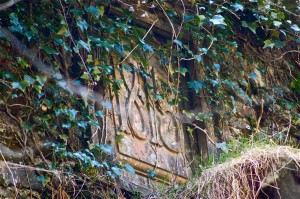TELFORD’S YEAR
Sadie Dixon-Spain

2007 saw the 250th anniversary of the day that Thomas Telford was born, August 9th 1757. The son of a Dumfriesshire sheep farmer, Telford is renowned throughout the western world. His legacy is immense and includes over 1500 miles of roads, 400 miles of canals, innumerable suspension, cast iron and masonry bridges, docks, harbours, water supply systems, flood prevention schemes and churches. In the Highlands and Islands his work enabled the infrastructure for transport and economic development that communities today still depend upon.
At the age of 14, young Thomas took an apprenticeship to a Stonemason in Langholm. In 1782 he went to London to work on the greatest construction project of its day, Somerset House. His natural ability and talent led him to quickly make the leap from Stonemason to Engineer and in 1788 at the age of 30 he was appointed the Surveyor of Public Works for Shropshire. By 1790 he was back in Scotland on behalf of the British Fisheries Society surveying harbours and piers, this work led to his being commissioned to design Ullapool in order to exploit a boom in herring fishing.
In 1801 the Lords of The treasury asked Telford to conduct a survey of the interior of the Highlands and the Islands. It was this survey that provoked a system of legislation that opened up the West of Scotland and improved roads bridges and communications with the rest of the country. From 1804 for a 20 year span Telford surveyed and constructed over 920 miles of road and over 120 Bridges throughout the region as well as constructing the Caledonaina Canal and completing some reconstruction work to the Crinan Canal.
Here in Cowal, Glendaruel’s original old road, sections of which can clearly be traced and walked along today was one of Telford’s own commissions. This was the main thoroughfare through Glendaruel until the late 1970’s when it was superceded by the bigger, faster and straighter A886. Glendaruel also boasts three Telford bridges. The Clachan Bridge at the South end of the Glen spans the river Ruel, another at the north end of the west road and further to the North, the A listed, triple arched, rubble built Dunans Bridge giving access to Dunans Castle. Dedicated by the Fletcher family to celebrate the Battle of Waterloo in 1815, this magnificent construction is believed to be the only bridge of its kind. Three Gargoyles face south, towards the original section of driveway (part of the Telford road), the surviving central Gargoyle is covering its mouth. The North side is dated 1815 and holds the initials JF (Jonathon Fletcher).
In 1818 Thomas was made first President of the Institute of Civil Engineers, a position he maintained by re-election until his death, despite his own misgivings that his lack of ‘formal education’ did not qualify him for the job. In 1823 he begin the construction of 32 “Parliamentary Churches” throughout the Highlands and Islands. These ‘standardised’ buildings each comprised of a T-shaped church with an accompanying manse and a superb example in Cowal is the church at Kilfinan.
Telford died in London on 2 September in 1834 at the age of 77 and was buried in Westminster Abbey. The original ‘civil engineer’ he will always be remembered as having made a huge contribution to and lasting impression on the infra structure and economic development of his native Scotland, notwithstanding his glorious artistic exploration of ‘structure’ which leaves us with a tradition of magnificent monuments and landmarks today.
This article first appeared in the Dunoon Observer 2007 and ForArgyll.com